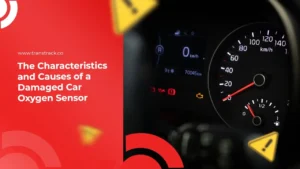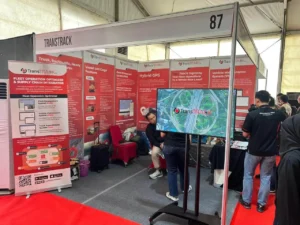These are The Parts of a Ship That are Interesting to Know!
Posted on May 13, 2024 by Nur Wachda Mihmidati

Parts of a ship are interesting to know. Ships are one of the main means of transportation used for various purposes, ranging from the transportation of goods and passengers to military operations and marine exploration. Every ship, whether small or large, is made up of various parts that have very important functions and roles in ensuring the ship can operate efficiently and safely. Understanding these transportation parts is not only important for those working in the maritime industry, but also for anyone interested in the world of shipping and ship technology.
In this article TransTRACK, we will take a thorough look at the various key components of this transportation, from the stack to the double bottom. We will see how each part works and contributes to the overall function of this transport. This knowledge not only provides a deep insight into their technology and construction, but also emphasizes the importance of each component in maintaining the safety and operational efficiency of ships in the middle of the ocean. Let’s start by exploring each of these parts of a ship and understand their vital role in the modern shipping world!
Parts of a Ship
Parts of a ship have very important functions and roles in operations and navigation. The following is an explanation of each part:
Chimney
A chimney is a vertical structure usually located at the top of these transports, often above the main deck or around the superstructure. The main function of a chimney is to channel smoke and combustion gases from the ship’s main engines and generators into the atmosphere, reduce pollution inside the ship, and maintain air quality in deck areas and other spaces. Chimneys are usually equipped with scrubbers to reduce pollutant emissions and filtration systems to reduce harmful particles.
Propeller
A propeller is a rotating mechanical device consisting of blades specifically designed to generate thrust when turned by a ship’s engine. Its main function is to convert mechanical power from the engine into thrust that moves the ship forward or backward. The efficiency and design of the propeller greatly affect the speed and fuel consumption of this transportation. Propellers are usually made of corrosion-resistant materials such as steel or nickel-aluminum-bronze alloys, with blade designs varying depending on the vessel type and desired speed.
Stern
The stern is the rear parts of a ship that is the end of this transportation structure. In addition to housing the propeller and rudder, the stern is designed to reduce water resistance and improve the hydrodynamic efficiency of this transport. The stern is often equipped with a platform for lowering lifeboats or other equipment. Stern designs can vary from the conventional, transom stern, to modern forms such as the cruiser stern that provide better stability and fuel efficiency.
Main Deck
The main deck is the top deck that covers the entire length of the ship from bow to stern. The main deck serves as the main work area on this transport, a place for loading and unloading cargo, as well as a movement path for the crew of this transport. It is also an important area for activities such as installing safety equipment and conducting emergency drills. The main deck is made of strong and corrosion-resistant materials, such as steel or other metal alloys, with anti-slip coatings to ensure crew safety.
Bridge
The bridge is the ship’s command and control center, located at the top of the superstructure, usually with a wide view in all directions. Here, captains and officers control the navigation and operations of these transports, including the control of engines, communications, and navigation systems. The platform is equipped with state-of-the-art equipment such as radar, GPS, electronic charts and other automation systems. The platform is designed with large windows to provide maximum visibility, using transparent materials that are resistant to extreme weather and impact.
Hull
The hull is the main body that runs from bow to stern and from the waterline to the main deck. It is the structure that keeps water from entering the ship and provides buoyancy. The hull is designed to withstand external water pressure and maintain stability in various sea conditions. The hull structure is made of strong and corrosion-resistant materials, such as steel or aluminum alloy.
Body
The tub is the front section that serves to split the water as it moves forward, affecting the hydrodynamic efficiency of this transportation. The shape of the tub is critical to reducing water resistance and increasing speed and fuel efficiency. Tubs are often equipped with a bulbous bow, which helps reduce waves and adds stability to this transportation.
Keel
The keel is the central lower parts of a ship that extends from bow to stern. The keel provides longitudinal stability and helps maintain direction during sailing. The keel is an integral part of the hull construction and serves as the backbone of this transportation, providing additional structural strength and aiding in even load distribution.
Breach Bulkheads
Breach bulkheads are walls or partitions that divide rooms within these transports, providing protection from leaks and assisting in the management of compartments in the event of damage. Breach bulkheads are designed to prevent the spread of water or fire from one compartment to another, increasing safety and incident resistance.
Double Bottom
Double bottom is the construction of this transport that has two base layers, the main bottom and an additional layer. The double bottom provides additional security against leakage if the bottom layer is damaged. This structure is often used to store fuel or ballast water, which helps in regulating stability and balance during the voyage. Double bottoms also provide additional protection against damage from impact or grounding.
Understanding and getting to know the parts of a ship helps us realize how important each component is in ensuring safe and efficient operations and navigation. From the chimney that channels smoke, the propeller that powers the ship, the stern that improves hydrodynamic efficiency, to the bridge that serves as the command center, they all play a vital role. Main decks as work areas, hulls that provide buoyancy, tanks that break up water, keels that maintain stability, breach bulkheads that provide protection, and double bottoms that enhance safety, are all designed to complement each other and support the overall function of the vessel.
To optimize vessel management and monitoring in this modern era, advanced technology such as TransTRACK’s Hybrid GPS is essential. The system combines satellite and Global SIM Card networks to ensure coverage in signal-challenged areas on the high seas. With Hybrid GPS, vessel operators can monitor their vessel’s position and movement in real-time, getting accurate and detailed data that is critical for navigation and safety.
TransTRACK’s Hybrid GPS allows you to keep your vessel on course, monitor overall operational conditions, and take quick action in case of irregularities or problems, even in remote locations at sea. This technology not only improves operational efficiency but also ensures the safety of the crew and the cargo being transported.
Improve your vessel management and safety by adopting TransTRACK’s advanced Hybrid GPS technology. For more information on how this technology can change the way you manage your vessels, visit our website or contact our representatives. Let’s explore and navigate the seas more safely and efficiently!
Topic :
 Bahasa Indonesia
Bahasa Indonesia









